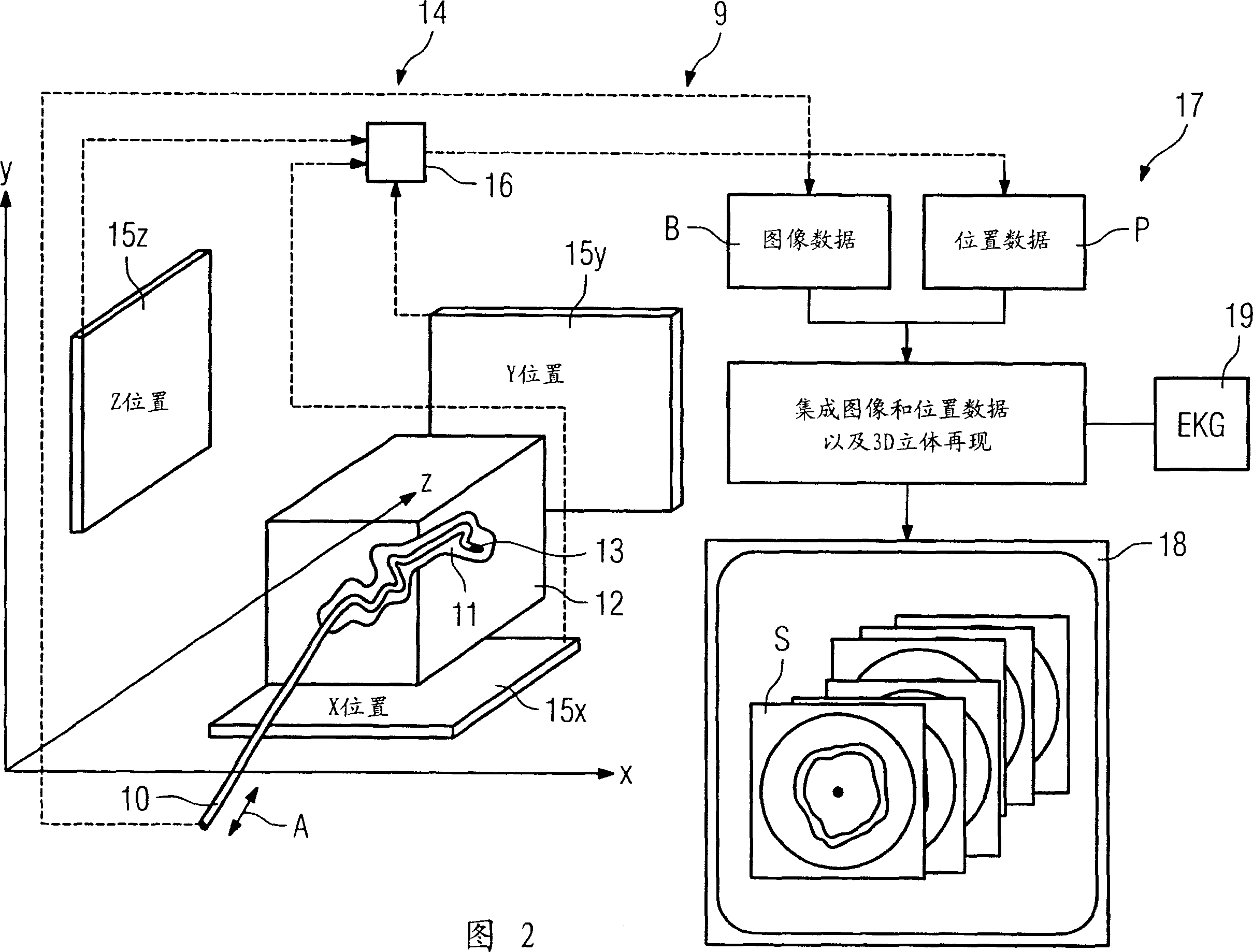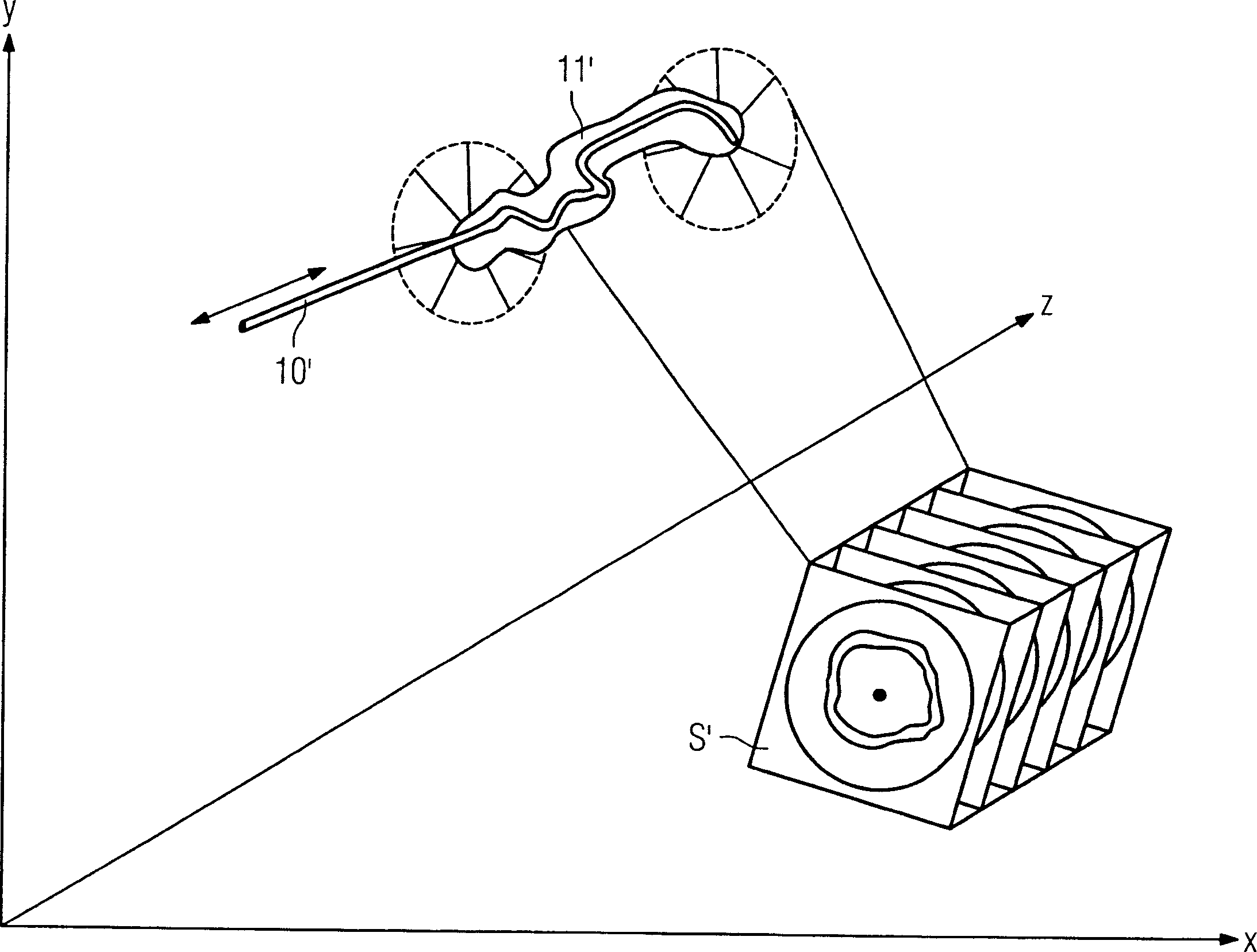Optical coherence tomography system for the examination of human or animal tissue or of organs
一种光学相干断层、器官的技术,应用在用于放射诊断的仪器、诊断、应用等方向,能够解决缺乏、不能示出病理结构变化、伸展和实际位置、立体图像没有示出三维伸展和被检查血管或器官的变化等问题,达到高诊断说服力、改善光学相干断层造影方法的效果
- Summary
- Abstract
- Description
- Claims
- Application Information
AI Technical Summary
Problems solved by technology
Method used
Image
Examples
Embodiment Construction
[0023] Figure 1 shows the basic principle of optical coherence tomography. A light beam 2 is projected onto a half mirror 3 from a light source (laser 1 in the example shown). The first partial beam 2 a is supplied to a reference arm in which the length of the partial beam 2 a is modulated, for example by means of a movable mirror 4 . The modulated reflected light reaches the half mirror 3 and passes it to the interferometer 5 as a reference light portion R.
[0024] Another sub-beam 2 b is coupled into a catheter 6 , which in the example shown has been introduced into a blood vessel 7 . At the tip of the catheter 6 , the coupled light exits and is rotationally coupled into the tissue of the blood vessel 7 . From there, since the reflection center position is likewise modulated (as indicated by the 4 reflected light symbols 8), the reflected light is recoupled into the conduit 6, conducted to the half-mirror 3, and from there likewise available as reflected inspection light ...
PUM
 Login to View More
Login to View More Abstract
Description
Claims
Application Information
 Login to View More
Login to View More - R&D
- Intellectual Property
- Life Sciences
- Materials
- Tech Scout
- Unparalleled Data Quality
- Higher Quality Content
- 60% Fewer Hallucinations
Browse by: Latest US Patents, China's latest patents, Technical Efficacy Thesaurus, Application Domain, Technology Topic, Popular Technical Reports.
© 2025 PatSnap. All rights reserved.Legal|Privacy policy|Modern Slavery Act Transparency Statement|Sitemap|About US| Contact US: help@patsnap.com



